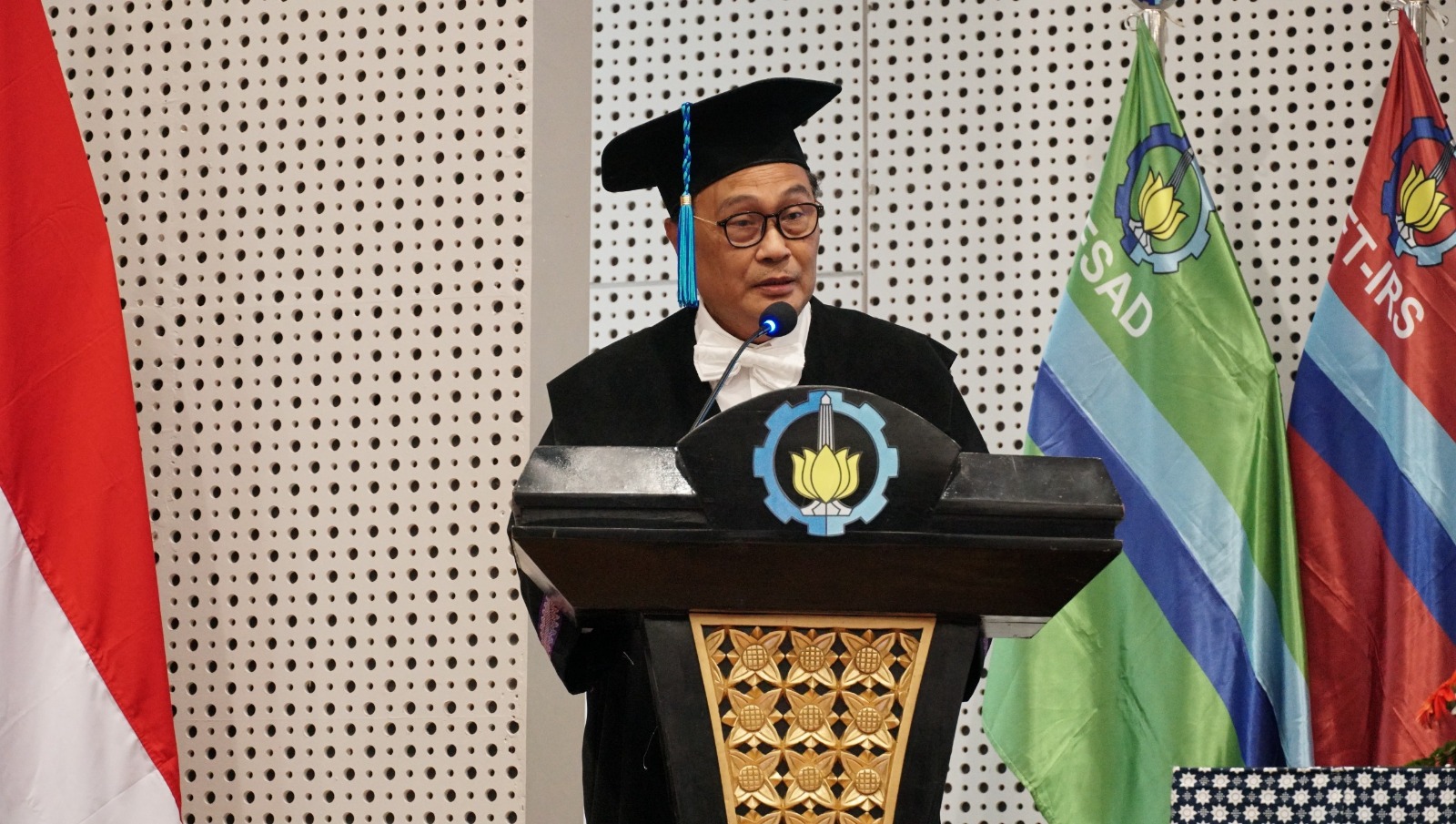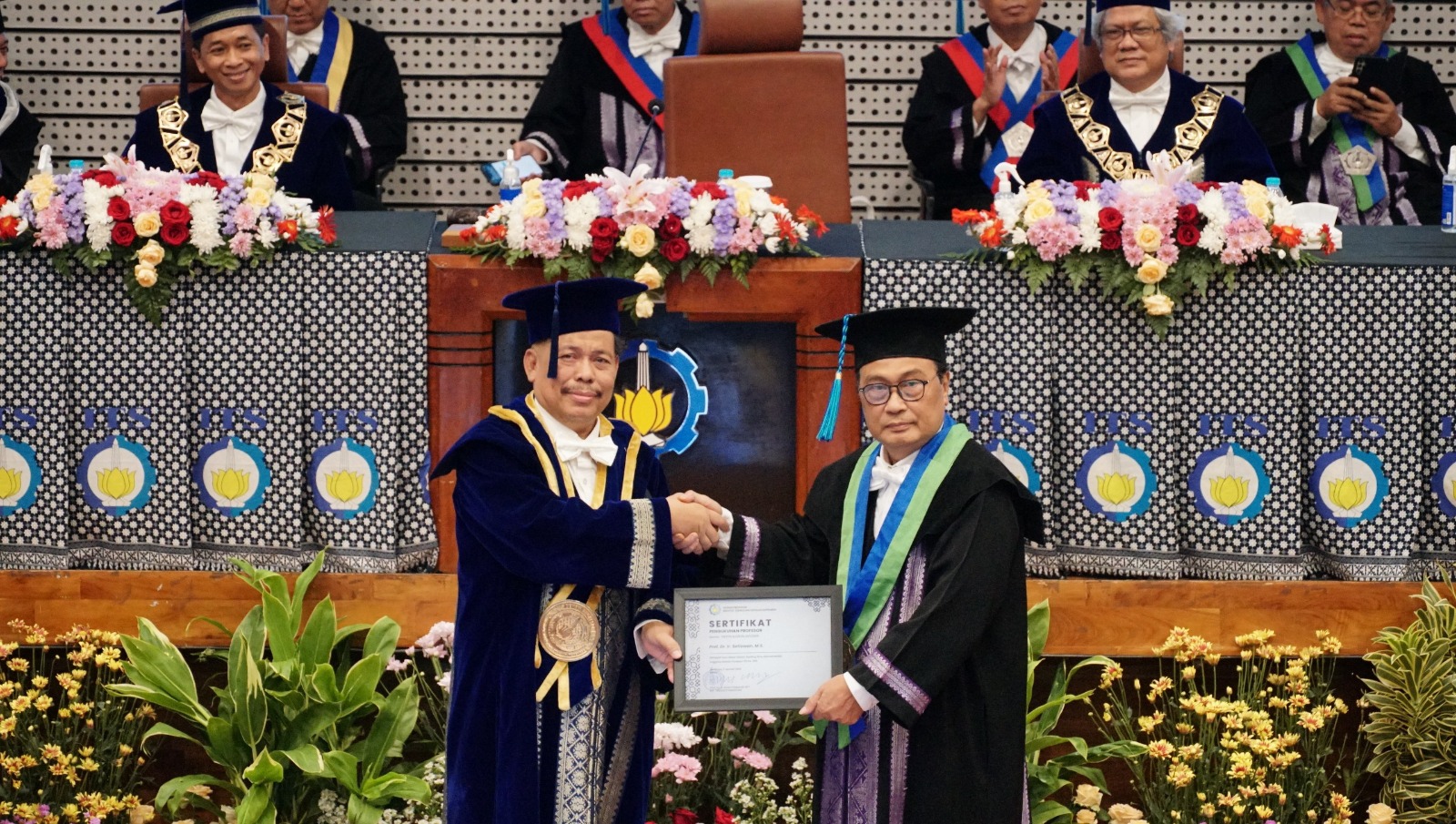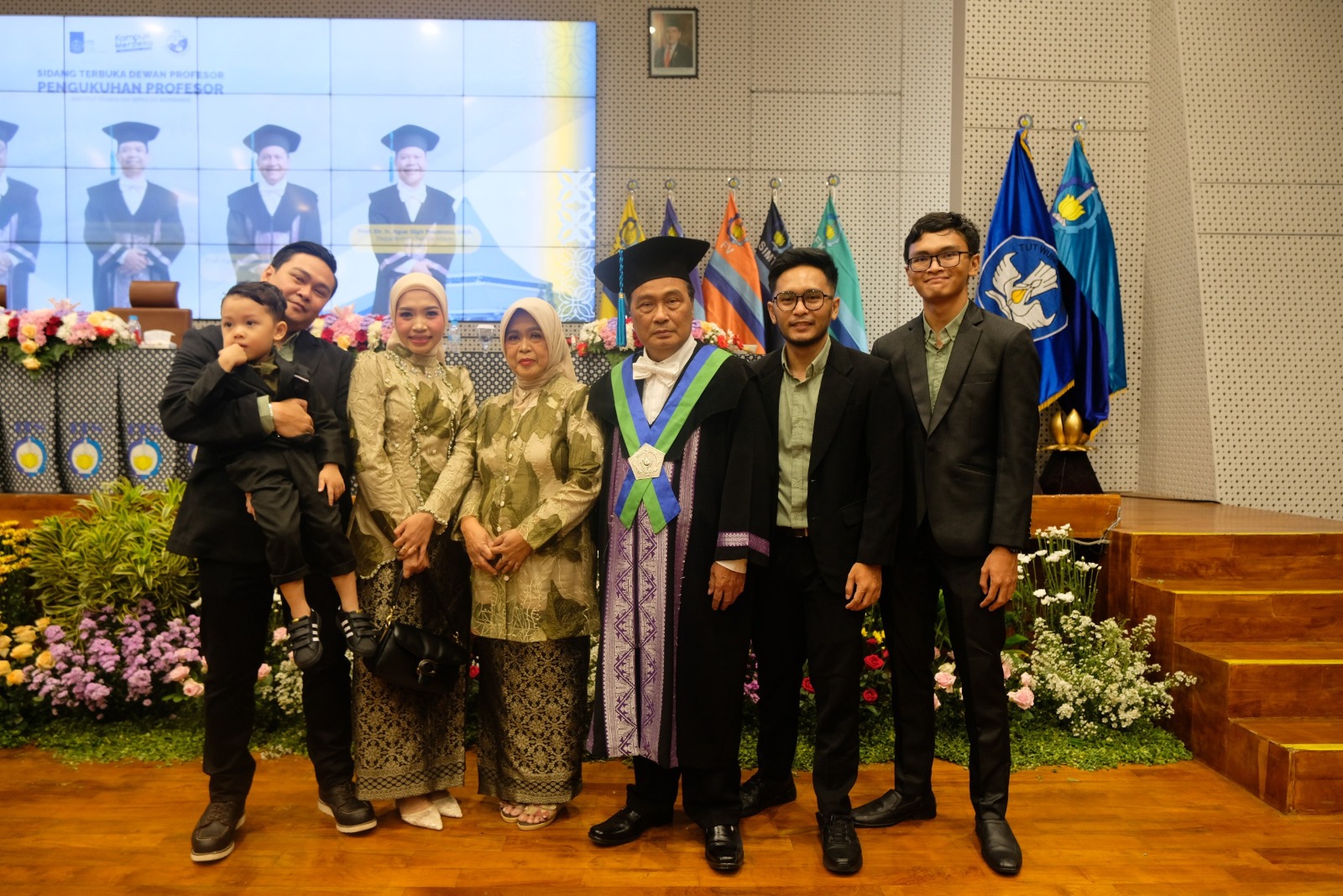ITS Professor Conceives Statistics as Key to Accurate Economic Decision-Making

Prof. Dr. Ir Setiawan MS when delivering his scientific oration at his inauguration ceremony as the 205th Professor of ITS
ITS Campus, ITS News — It is undeniable that the economy always contains risks due to its dynamic nature and complex impacts, so it is important to be able to measure and manage them. Answering this challenge, the 205th professor of Institut Teknologi Sepuluh Nopember (ITS) Prof. Dr. Ir Setiawan MS initiated quantitative tools to improve forecasting accuracy in economic policy.
In his scientific oration entitled The Role of Statistics in Econometrics for Quantitative Economic Policy Making, the professor of the Department of Statistics explained the important role of statistics in economic analysis. He explained that two main approaches are interrelated, namely qualitative and quantitative. “The quantitative approach complements the qualitative approach with a stronger evidence base that increases accuracy,” he explained.
After completing his doctoral studies in 2007 at Institut Pertanian Bogor (IPB), Setiawan began researching the alignment between statistics and economics. He believes that a quantitative-based approach to statistics can improve the accuracy of economic predictions and support Sustainable Development Goals (SDGs) 8 on Decent Work and Economic Growth.
The head of the ITS Economic and Financial Data Analytics Laboratory shared several perspectives on the future of statistical models in economics or what is called econometrics. Some of them are incorporating big data, developing more flexible and simple models, and combining econometric models and machine learning.

Prof Dr Ir Setiawan MS (right) when inaugurated as the 205th ITS Professor
The man born in Gresik in 1960 has produced several models of study results. Some of the results are Hybrid SSA-TBATS, Subset and Dummy Variables in the TSpVARX model, and the Generalized Estimating Equation Approach to the Dynamic Spatial Durbin Simultaneous Equation Model of Panel Data. “These methods are respectively developed on the Time Series mechanism and its regression,” said the father of three children.
In the first study, Setiawan said, that the rapid development of computing technology requires a forecasting method that has significant results, so Setiawan developed the Hybrid SSA-TBATS method. This research proposes a combination of SSA and TBATS forecasting methods that are studied to accommodate export dynamics to improve forecasting accuracy.
Furthermore, Setiawan explained that Hybrid SSA-TBATS produces a (Mean Absolute Percentage Error) MAPE value of less than 10 percent based on the duration of the forward period. Hybrid SSA-TBATS has the lowest MAPE value compared to SSA and TBATS, so it is considered more efficient. The forecast results generated by Hybrid SSA-TBATS are quite accurate, although they are short-term and useful for setting trade and monetary policies.

Prof Dr Ir Setiawan MS with family after being inaugurated as the 205th Professor of ITS
In the second study, Setiawan initiated the addition of Subset and Dummy variables to the TspVARX Model to overcome the issue of unsatisfactory inflation and money outflow forecasting using conventional TSpVARX. “Some money outflow data points that cannot be captured by TSpVARX have been captured by the TSpVARX model with Subset and Dummy,” he explained.
In his third study, Setiawan developed a method to analyze the relationship of economic factors in several countries as well as analyze the long-term and short-term impact of a policy. Using the Generalized Estimating Equation (GEE) approach, he created a model that can estimate the influence between regions and the time factor of economic growth.
The IPB Statistics Master alumnus expressed his hope that the model he developed would not only be part of academic studies but also be applied in the real world. “I hope this model can help make more accurate and useful decisions, not just concepts on paper,” he said. (ITS Public Relations)
Reporter: Aulia Okta Wijaya
Related News
-
ITS Develops Four‑Legged Dog Robot with Sensors and Navigation
ITS Campus, ITS News – Institut Teknologi Sepuluh Nopember (ITS) is further solidifying its role in robotic technology
February 07, 2025 12:02 -
ITS Mathematics Alumnus Creates EEG-Based Brain Research Technology
ITS Campus, ITS News — One of the graduates of the Institut Teknologi Sepuluh Nopember (ITS) has succeeded in
February 07, 2025 12:02 -
ITS Promotes FAST-D Scholarship, Unggul, and Global Excellence Scholarship
ITS Campus, ITS News – Institut Teknologi Sepuluh Nopember (ITS) always shows its commitment in supporting students to develop their best
February 07, 2025 12:02 -
Supporting the Implementation of SPMB 2025, ITS Develops the SENOPATI Platform
ITS Campus, ITS News – Showing its contribution in the field of education, Institut Teknologi Sepuluh Nopember (ITS) has redeveloped a platform
February 07, 2025 12:02
